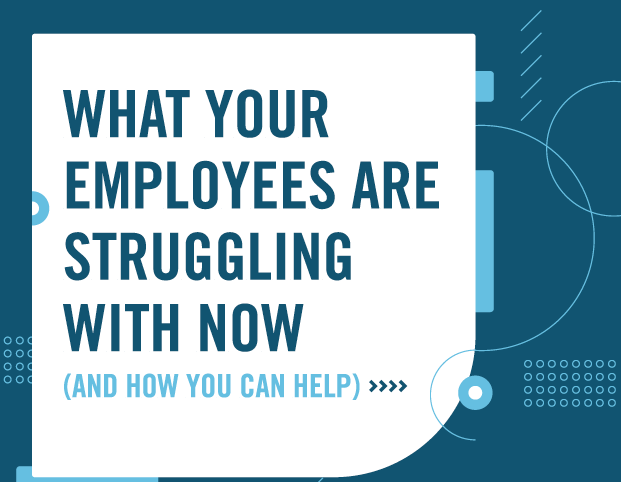Having to work remotely for months on end is affecting employees at a mental and physical level alike. Months after the switch from an office environment, many are still struggling to adapt and often get lonely, having no one to talk to or simply being afraid to voice their concerns.
Even when remote work was an individual’s choice, as many as 20% of remote employees were already struggling with loneliness. While 40% of employees crave the increased flexibility that working from home brings, being suddenly thrown into this situation with no warning has caused communication problems, a lack of motivation, and even burnout.
The onus is now on the employer to help employees transition towards this new normal. Only proactive employers will retain talent and keep their employees happy given the uncertainty they’re faced with.
If you’re hesitant to take the time to better manage your employees and their wellbeing, here are the benefits of handling remote employee struggles promptly:
- You’ll improve productivity through a stable routine
- You’ll increase individual and team motivation
- Your employees will feel appreciated for their work
- You’ll boost talent retention rates and create a solid employer reputation
- You’re reducing the psychological stress remote workers could be experiencing on a daily basis
From increased productivity to a spike in motivation and loyalty, we’re looking at how you can identify their challenges of working from home and offer tailored solutions.
But do you know what your employees’ current challenges are right now?
Below we’ve put together a brief guide on how to help a struggling employee.
1. Work Life Balance

“It’s hard to juggle work and life at home with two kids.”
Jake is a father of two and had to get used to working from home with his toddlers demanding his attention. Although he’s thrilled to work from home, he doesn’t have experience creating his own schedule that would help him to juggle both his work and personal life. He has to organize his schedule around theirs and feels he cannot keep a healthy work-life balance anymore.
Remote employees like Jake are putting in an extra 28 hours of work each month because they find it challenging to create a boundary between work and personal life. This led Jake and other workers in similar situations to start experiencing the early stages of burnout which already affects over 40% of workers in a regular office environment.
How can you help Jake?
- Assure him that he is not alone and that his life at home is important. Stay flexible and patient when listening to his problems and offering solutions.
- Offer daily meditation classes he can take together with his colleagues. Fifteen minutes a day does the job!
- Consider offering flexible hours and a schedule that allows him to spend time with his kids.
- Make it a company-wide rule for your employees not to exceed the 8-hour workday. Create separate policies to help them handle the work they couldn’t finish without working overtime.
2. Communication within the team

“I feel isolated and tired of working from home. Communication with my team is slow and unclear.”
Peter started working from home six months ago. He did so with no previous experience and didn’t receive any training. He lives alone and often feels lonely and unmotivated. This takes a toll on his productivity.
Twenty percent of remote employees, like Peter, are struggling with communication issues. These are most commonly the result of poor management and lack of communication policies to unify collaboration across the entire organization. In turn, employees find it difficult to keep in touch with their colleagues. Work performance also suffers due to miscommunication and misunderstandings throughout the project development process.
How can you help Peter?
- Hold virtual coffee meetings where Peter can talk to his teammates regularly. Make this part of his weekly schedule and use a digital app like Donut to connect people for one-on-one breaks.
- Get his endorphins flowing! Suggest a cardio class for him to join and motivate him to start a workout schedule by supporting the costs.
- Set up a Slack channel or message board where teammates can share their struggles and productivity tips.
3. Stability and structure

“I haven’t been able to exercise as much lately, and I’m afraid to go to my regular classes.”
Katrin used to go to the gym every day after work. When gyms closed, she found it harder to motivate herself to stay active at work. She’s been getting less exercise over the last few months and this is slowly taking a toll on her health. With classes opening up again, she fears a potential infection, so she’s decided not to attend them for now. She’s started running more, but this doesn’t help her long-term fitness goals and she feels like she doesn’t have anyone to talk to about these challenges at work.
How can you help Katrin?
- Support her with getting back to sports and join the #SafeSportsClub. Offer a company-wide flexible fitness membership so Katrin can decide when to take an online class or attend a physical one.
- Create a dedicated group within your company where people like Katrin, who are interested in staying active, can interact and discuss their issues.
- Offer to support the costs of any equipment and weights she might need at home.
4. Focus and productivity

“The whole situation is draining my productivity and I have no idea what’s going to happen next.”
Georgia has always loved working from the office and interacting with her colleagues. When at home, she finds it hard to motivate herself and she’s seen a drastic decrease in her productivity levels. This is mainly due to her uncertainty of what’s coming and a fear of a second wave. She’s also been distracted by checking the news and worrying about the future instead of focusing on work.
How can you help Georgia?
- Hold regular one-on-one meetings with all employees to get their honest thoughts on the situation and find out what their main struggles are. Make sure to act upon these on time as well to ensure all issues are fixed.
- Let people voice their concerns openly. Georgia and her colleagues will find talking to others reassuring and they’ll cope with the uncertainty together instead of as individuals.
- Encourage Georgia to take on meditation to help clear her mind and handle any worries. Self-care is the biggest priority at this time with stress alone, impacting 73% of employees’ moods.
5. Appreciation

“I don’t feel like my work is recognized anymore.”
Maria is a top-performer and is used to receiving daily praise for her work which was a core motivator for her. When she started working from home managers stopped interacting with her due to the new challenges that we’re requiring their complete attention and schedule. She’s no longer feeling appreciated and risks being part of the whopping 65% of employees who don’t receive recognition at all within a year. Her lowered performance and lack of motivation are also causing her to consider looking for an employer who can offer appreciation and professional growth opportunities.
How can you help Maria?
- Improve your manager-employee communication by regularly checking on all employees, offering feedback on their work, and praising them for the results they show. Even if it’s all done via a video call.
- Implement a rewards program that focuses on what your employees truly need. Make sure you offer benefits that are directed at your employees’ mental and physical health to everyone without being conditioned by work performance. A platform like Bonusly helps your employees accumulate points and turn them into benefits like sports subscriptions or coupons for fitness equipment. Showing Maria and her colleagues that you care about their health can go a long way!
- Express gratitude like never before. Showcase one of your team members every day on social media, assign special projects, or have them write their thoughts in a blog post so you can shine some light on their work.
How to Help Every Individual with Their Remote Work Struggles
So how do you help a struggling employee when everyone has their own problems to deal with?
All of these scenarios are likely to occur within your teams. You need to first talk to employees who are struggling at work to identify what their challenges are. A tailored approach is the only one that will help you solve everyone’s challenges and maintain the wellness of your employees in the long run.
Take into account all employee problems before you decide to make company-wide changes. Chances are, a single extra benefit won’t help improve poor performance when working remotely.
So what are you going to do to support your remote employees with the challenges of working from home?

